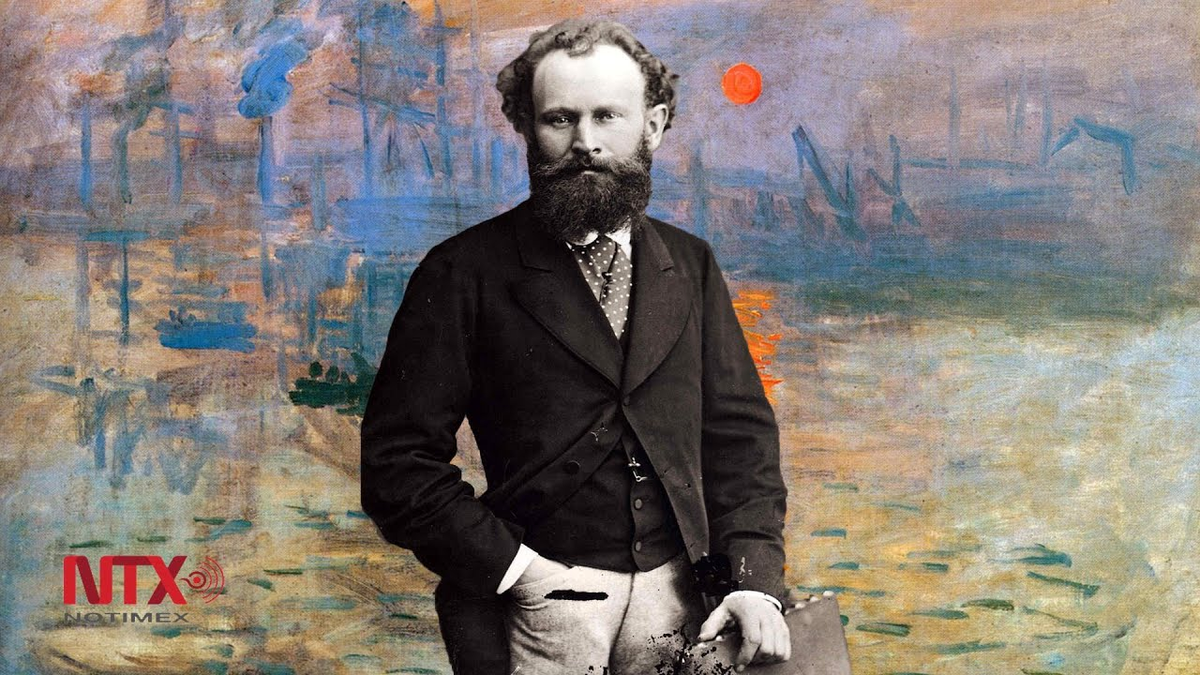Born on January 23, 1832, into a wealthy family and after receiving a careful education, he failed in his attempt to enter law school, as his father desired. He was also unable to enter the French Naval Academy and, in the end, with his father’s consent, he attended the workshop of Thomas Couture, where he spent six years under his tutelage copying the great masters exhibited at the Louvre.
He was considered the first impressionist, although he did not participate in the presentations of the group that had adopted this name after a derogatory comment by the critic. Louis Leroy on a painting Claude Moneta young admirer of Manet’s work.
Manet’s notoriety, in the early stages of his career, was due more to the subject matter of his paintings than to his technique since he did not consider himself an innovator. His works scandalized both the public and academics. Was he seeking provocation or just offering a new vision of the classics?
Among the works that created the most turbulence among the public and critics were Lunch on the grass (1863), clearly inspired by the country concert of Titian (1510), and the nude of Olympia, inspired by Venus of Urbino from the same Italian master.
Why the rejection of academics, when Manet only reinterpreted the classics?
Perhaps the answer lies in the uninhibited gaze of the model, a young woman named Victorine Meurenta beautiful woman of angry life, notorious in a dissolute society like that of the Second Empire. These were the times when courtesans proliferated in Paris society, reigned in its salons and attracted gentlemen, like Manet himself, eager for gallant adventures. Victorine Meurent was also a model for Degas and Toulouse-Lautrec, student at the Academy and ended her days as a painter.
While the academics looked at Manet’s works in bewilderment, the young painters who gathered at the Guerbois Coffee –the cradle of Impressionism– admired and praised this artist, he remained outside the group, except in one aspect: they were all rejected by the authorities of the Academy of Fine Arts.
Originally, the Academy had been created in order to replace the serialism of guilds between masters and apprentices. However, from the second half of the 19th century onwards, the Academy persisted in imposing tight control, subjecting artists to traditionalist bourgeois taste.
Since 1673, the Academy selected and classified the works of artists, and since 1725 these were exhibited in the Louvre Palace, at the well-known Paris Salon. With the rise of Napoleon IIIthe Academy organized a jury chaired by the director of the imperial museums, which guaranteed the presence of the State as a censor of disruptive styles or ideas that subverted the values that the government wanted to impose.
In 1857, the first Paris Salon organized in this way, was characterized by the large number of works not admitted. This trend increased over the years until, in 1863, 3,000 of the 5,000 works presented were not accepted. The protests reached the ears of the emperor, who ordered that a room be made available to display the rejected works.
It was in this space where Manet exhibited Lunch on the grass and, years later, his Olympiaworks in which the luminosity of Victorine Meurent’s body stands out.
In 1867, discouraged by the poor reception of his work, Manet set up a pavilion on his own where he exhibited 50 works of his authorship, without achieving any success with the public. Critics were divided over this disruptive attitude: Emile Zola praised the painter’s work and his defiant gesture, while his friend Edmond Duranty He harshly criticized both his paintings and his posture. This moved the irascible Manet, who challenged Edmond to a duel. Neither of them knew the secrets of fencing, so they clashed their sabers without causing any serious injuries. They concluded this affair with a handshake and considered their honor saved.
In 1870, Napoleon III’s empire collapsed after the Battle of Sedan and Paris was besieged by the Kaiser’s troops. Manet served his country as a lieutenant in the national guards and, a year later, was part of the Federation of Painters and Sculptors of the short-lived Paris Commune.
This group became a Joint Stock Company that, in 1874, organized an exhibition outside the academic and neoclassical postulates, which the young painters gathered at the Guerbois café disparagingly called “Art pompier” (“firefighter art”) for their paintings with Greco-Roman mythological allegories where men wore helmets similar to those worn by Paris firefighters.
The place chosen for the exhibition was the photographer Nadar’s workshop and 165 works by 39 painters were exhibited. Manet, incurring a new contradiction, refused to participate.
With the appearance of photography, young artists believed that their works should not mimic nature, but rather highlight the sensation and transience of the moment, along with the light that invades everything. The palettes were filled with bright and vibrant colors.
Between these artists there was a secret bond that Emile Zola called “the brotherhood in vision.” Curiously, Renoir, Monet and Lautrec They were short-sighted and DegasHe also suffered from a retinal condition. Was it perhaps this blurring of the images that created the impressions that revolutionized the way of painting what they saw?
Manet remained alien to this brotherhood and over time his work was accepted and finally the artist achieved the economic success that had always obsessed him. Finally, the Paris Salon recognized his talent, and he was even awarded the Legion of Honor. However, his health deteriorated due to decompensated diabetes that caused severe circulatory disorders. Doctors had to amputate his leg, and he died shortly after.
Manet became the initiator of a movement without the intention of ending the classical school or creating a new style, encouraging his young colleagues to follow a path that he began without conviction, between doubts and hesitation.
One last curiosity should be noted, the beautiful Victorine Meurant who moved society with her illuminated body and her seductive gaze, as a painter she was accepted by the severe juries of the Academy and participated in several Paris Salons although today she is only remembered for her exhibition among those rejected by those same judges.
Source: Ambito
David William is a talented author who has made a name for himself in the world of writing. He is a professional author who writes on a wide range of topics, from general interest to opinion news. David is currently working as a writer at 24 hours worlds where he brings his unique perspective and in-depth research to his articles, making them both informative and engaging.




